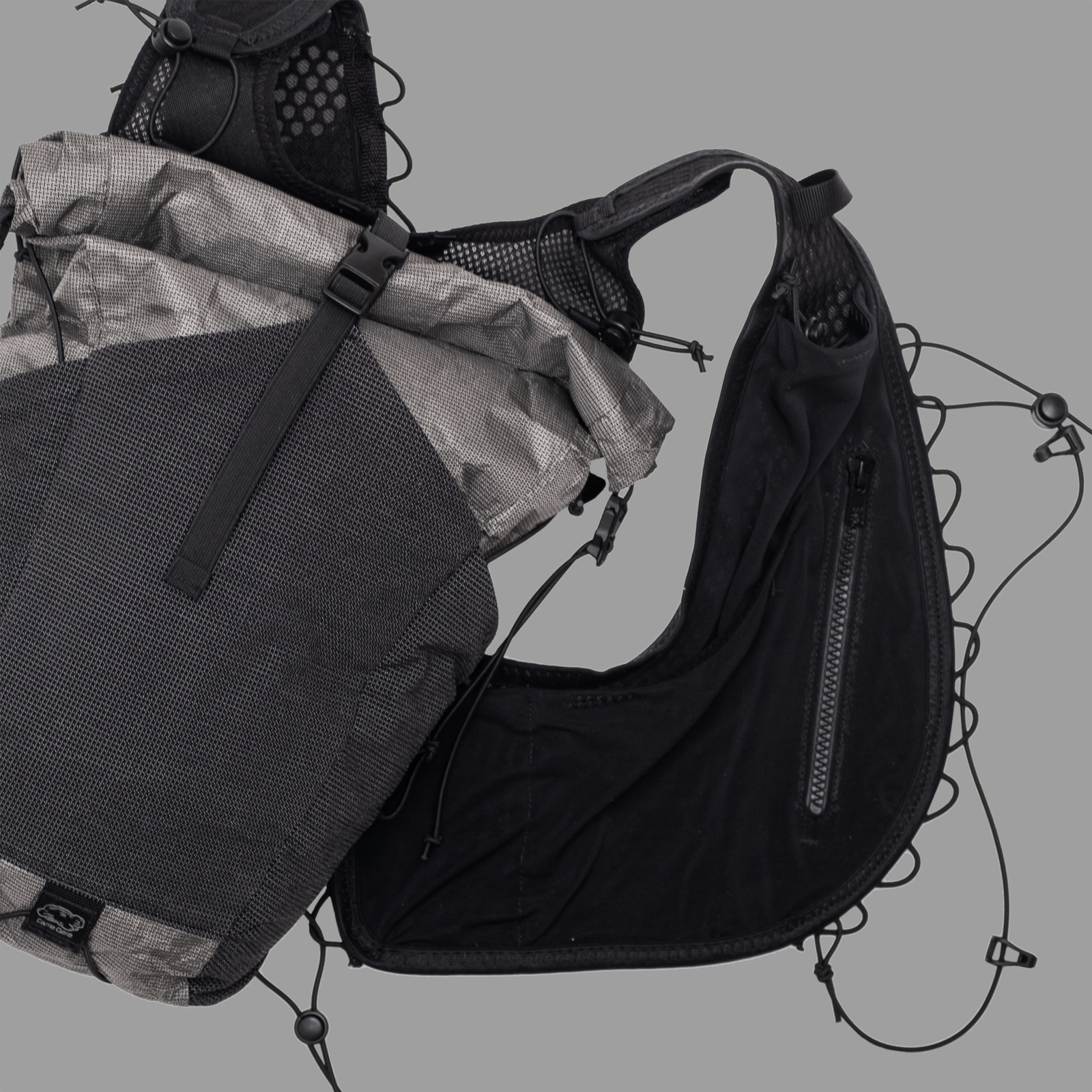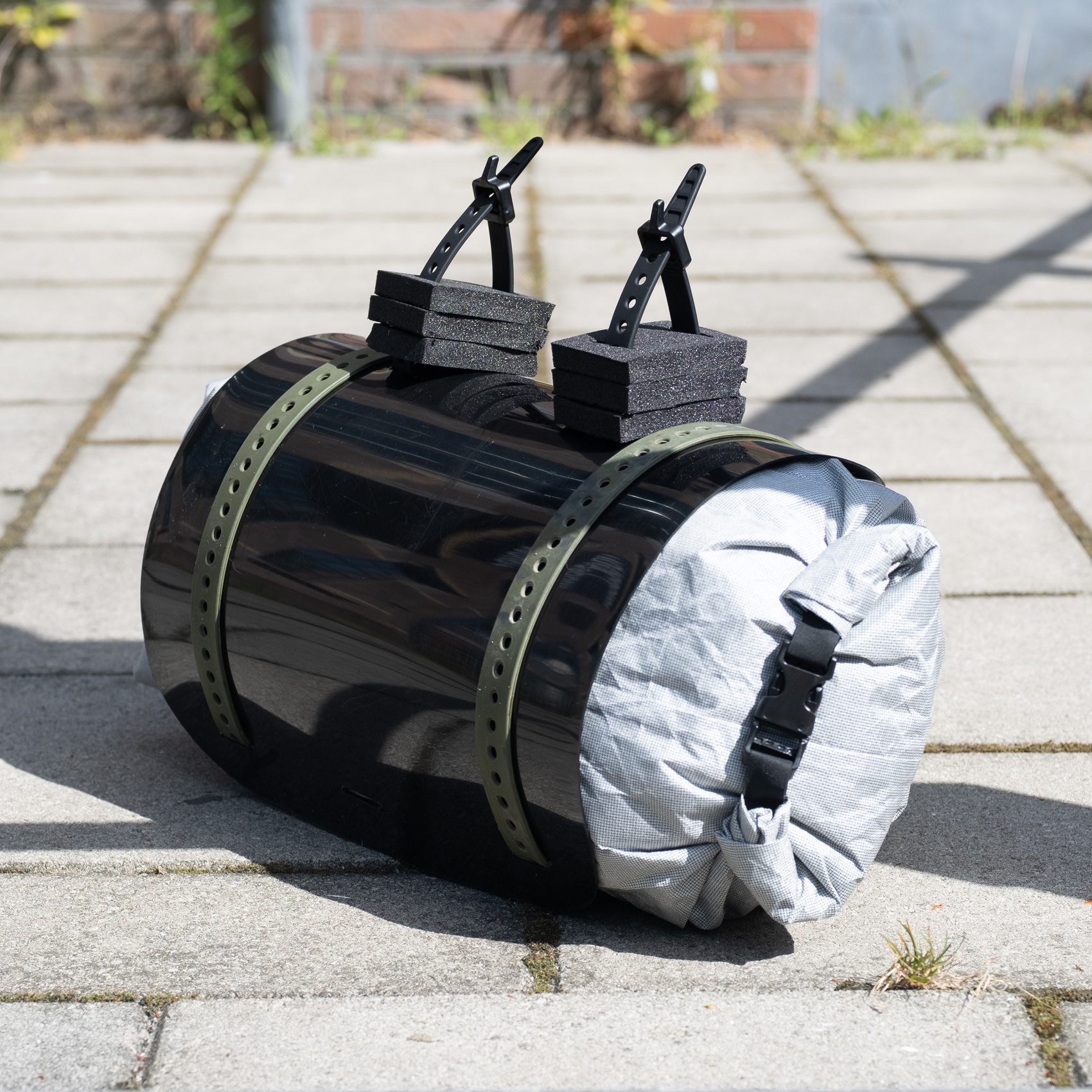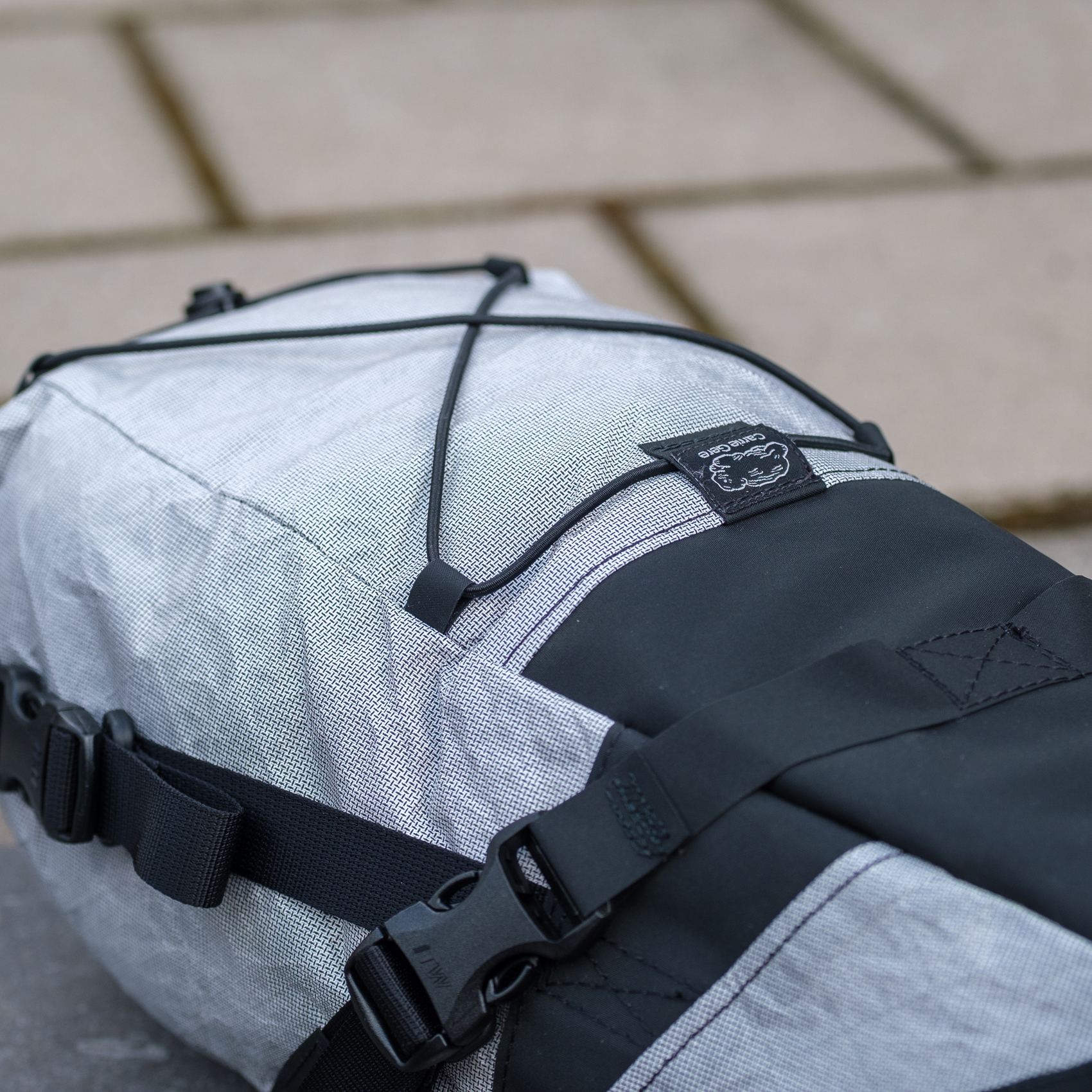Making ultralight bags for the Alps Divide
When I raced Hellenic Mountain Race earlier this year I struggled on the long hike-a-bike sections. Dragging my bike up and over massive boulders on an unforgiving hiking trail, I couldn’t help but think that I needed to refine my setup a little.
I know that weight isn’t everything – plenty of racers have won races on heavy bikes, beating competitors on setups that weighed several kilos less – but when hike-a-bike and a 32,000m elevation profile are involved, it’s smart to save weight where you can. That’s why, 2 months before the Alps Divide, I set myself a challenge to reduce my overall setup weight by 2kg.
Steel bikes are not the lightest, but I love the ride feel and their indestructibility. My day-to-day bike is a steel bike from the early eighties that is still going strong. Switching to a carbon frame may seem like an obvious choice to many, but I knew I had to look beyond the frame.
The first choice I made was an easy one: my dropper post died on day 1 of HMR, and for the rest of the race it acted as a very heavy rigid post. I sent it back when I got home and put the money towards a carbon rigid seat post and lighter cranks. With 500g saved, I still had 1.5kg to go.
As a bag maker, the next logical place to look was at the bags themselves. It’s surprising how much weight variation you’ll find across different bag brands, though it doesn’t seem to be as scrutinised as the weight of the bike itself.
When designing new bags, I always test the prototypes during long trips and races – if a bag is going to fail, it will fail on a long, rough race, and I’d rather that happened to me than a customer. I decided to take a risk and buy some Ultra 100X which is an incredibly light material. I’ve used Ultra 200 in my supply vests for some time and have been really impressed, but the 100X is even lighter and hasn’t yet gained as much popularity in the bikepacking or hiking space.

The first bag I wanted to improve was my front roll. I’ve used a Topeak Frontloader since I first started bikepacking, and the harness + dry bag is a tried-and-tested design that just works. Out of curiosity, I placed it on the scales and found it weighed 480g. I was confident I could cut a significant amount of weight here.
I made a new harness from HDPE and cut holes directly into it to feed Voile straps through. I find Voile straps far nicer to use than fabric straps, so this seemed like a big upgrade regardless of the weight savings from the simplified design. I made the dry bag from the 100X and made handlebar spacers from high density foam. The result was a bag functionally identical to the Topeak setup, but at 240g, it was half the weight.


Next up was the seat pack. I don’t like running a large seat pack, especially in races. I’ve found 6L to be the sweet spot in terms of capacity & stability, so I designed the bag to fit this size. I used the 100X as the main material, with hypalon at the points of contact. I added a stiffener, but unlike most seat packs, I only added it to the part that meets the saddle and seat post, leaving it out of the side panels. This was a bit of a gamble, but I reasoned that if a bag is packed well, then you don’t need such a rigid frame. Take ultralight hiking bags – they do away with frames entirely, putting the responsibility on the user to pack the bag in such a way that this isn’t needed. If you’re the kind of person that just wants to throw your gear into a bag and get moving, then framed bags are the right choice, but if you care about weight and are willing to pack more thoughtfully, it’s not necessary.
The final weight of the seat pack was 175g, 125g lighter than the already light Apidura one it would replace.


Finally I remade my frame bag in Ultra 100X, opting for a lighter liner fabric and no foam around the edges. I already make my own frame bags a lot less feature-dense than the ones I make for customers, and as a side effect, they’re a bit lighter too. There are two reasons for this: Firstly, I don’t have a lot of time to make bags for myself, and secondly, I find limited use for interior pockets in a frame bag. Instead, I prefer to organise my stuff into ziplock bags, which I pull out to hunt for the thing I need out in the open. The finished frame bag weighed 230g, 110g less than my previous bag.
The three new bags had a combined weight of 645g, 475g lighter than my previous setup.

With the bike and bags dialed, I still had a kilogram to lose, and it seemed logical that to shave that weight I’d have to leave some things at home. I will always go into a race with a pretty conservative pack list. If I’m heading into the mountains I want to make sure I’m safe if the shit hits the fan – I’ll never be the kind of racer to leave my sleep kit at home. However, after enough races, you start to get a clearer idea of what you actually need and what you don’t. For example, I love taking photos and usually bring a camera, but I rarely end up using it during the race. So, for the first time, I left it at home.
Another thing I’ve learnt from previous races: although I get anxious about having enough space in my bags for the longer stretches without resupply, I always find myself finishing a race with food that I started with. In an effort to combat this, I decided that having less bags for things to hide in would actually be a good approach, so this time I ditched the stem bags. Less bag space forces you to pack more carefully, leading to better organisation and efficiency during the race.
I won’t go into every minor change I made, but I went into the Alps Divide with a setup that weighed almost 2.5kg less than my Hellenic Mountain Race setup. In terms of numbers my total weight excluding food and water but including all the gear I’d be wearing was 22.46kg for HMR and 20.08kg for AD.
The Alps Divide threw everything at us in terms of weather. We cycled through torrential rain, sub freezing temperatures and heavy snow. I was so glad that in the process of refining my setup I didn’t leave anything at home that I needed to be safe. In fact, I was able to cycle through a snowstorm precisely because I took a tonne of warm clothes.
The race went really well for me. I’m sure I can’t attribute all that to a lighter setup, but each time I race I feel like I’m able to push myself further and endure more of the tough stuff. I finished the race in 6 days, 18 hours, winning the women’s race and placing 12th overall.

I was really happy with how the bag prototypes held up during the race. I’m confident in Ultra 100X as a strong and durable material, so I’ll be looking to add it as an option in the future for custom bags, and soon the seat pack and front-roll will make their way onto the store as well.
Find my full packlist here

